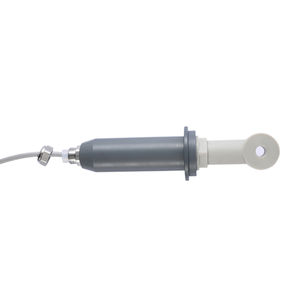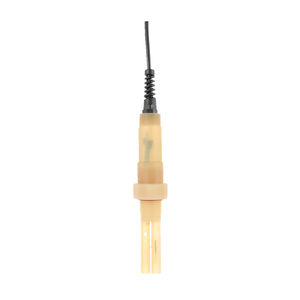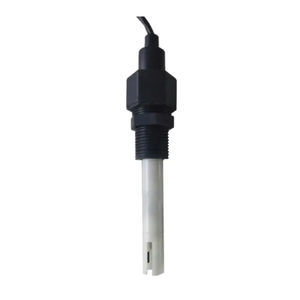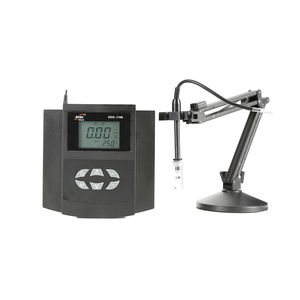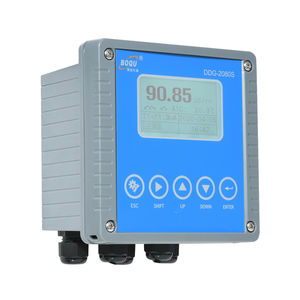
- Metrology - Laboratory
- Analytical Instrumentation
- Clean water conductivity sensor
- Shanghai Boqu Instrument Co.,Ltd.
- Company
- Products
- Catalogs
- News & Trends
- Exhibitions
Clean water conductivity sensor DDG-0.1for pure wateranalogwith temperature measurement
Add to favorites
Compare this product
Characteristics
- Applications
- for pure water, for clean water
- Output
- analog
- Other characteristics
- with temperature measurement
Description
The conductivity industrial series of electrodes are specially used for the measurement of conductivity value of pure water, ultra-pure water, water treatment, etc. It is especially suitable for conductivity measurement in the thermal power plant and the water treatment industry. It is featured by the double-cylinder structure and the titanium alloy material, which can be naturally oxidized to form the chemical passivation. Its anti-infiltration conductive surface is resistant to all kinds of liquid except fluoride acid. The temperature compensation components are: NTC2.252K, 2K, 10K, 20K, 30K, ptl00, ptl000, etc. which are specified by the user. K=10.0 or K=30 electrode adopts a large area of platinum structure, which is resistant to strong acid and alkaline and has strong anti-pollution capacity; it is mainly used for on-line measurement of the conductivity value in the special industries, such as the sewage treatment industry and the seawater purification industry.
★ Measure range: 0-200us/cm
★Features: 316L Stainless steel, strong anti-pollution capacity
Conductivity is a measure of water’s capability to pass electrical flow. This ability is directly related to the concentration of ions in the water
1. These conductive ions come from dissolved salts and inorganic materials such as alkalis, chlorides, sulfides and carbonate compounds
2. Compounds that dissolve into ions are also known as electrolytes 40.
Catalogs
No catalogs are available for this product.
See all of Shanghai Boqu Instrument Co.,Ltd.‘s catalogsOther Shanghai Boqu Instrument Co.,Ltd. products
Conductivity
Related Searches
- Gas analyser
- Concentration analyser
- Monitoring analyser
- Liquids analyser
- Automated analyzer
- Dust analyzer
- Process analyser
- Portable analyser
- Continuous analyser
- Integration analyser
- Water analyser
- Real-time analyser
- Digital analyser
- In-line analyser
- Calibration analyser
- Temperature analyser
- Sampling analyser
- Waterproof analyzer
- Analyser for the food industry
- RS485 analyser
*Prices are pre-tax. They exclude delivery charges and customs duties and do not include additional charges for installation or activation options. Prices are indicative only and may vary by country, with changes to the cost of raw materials and exchange rates.


